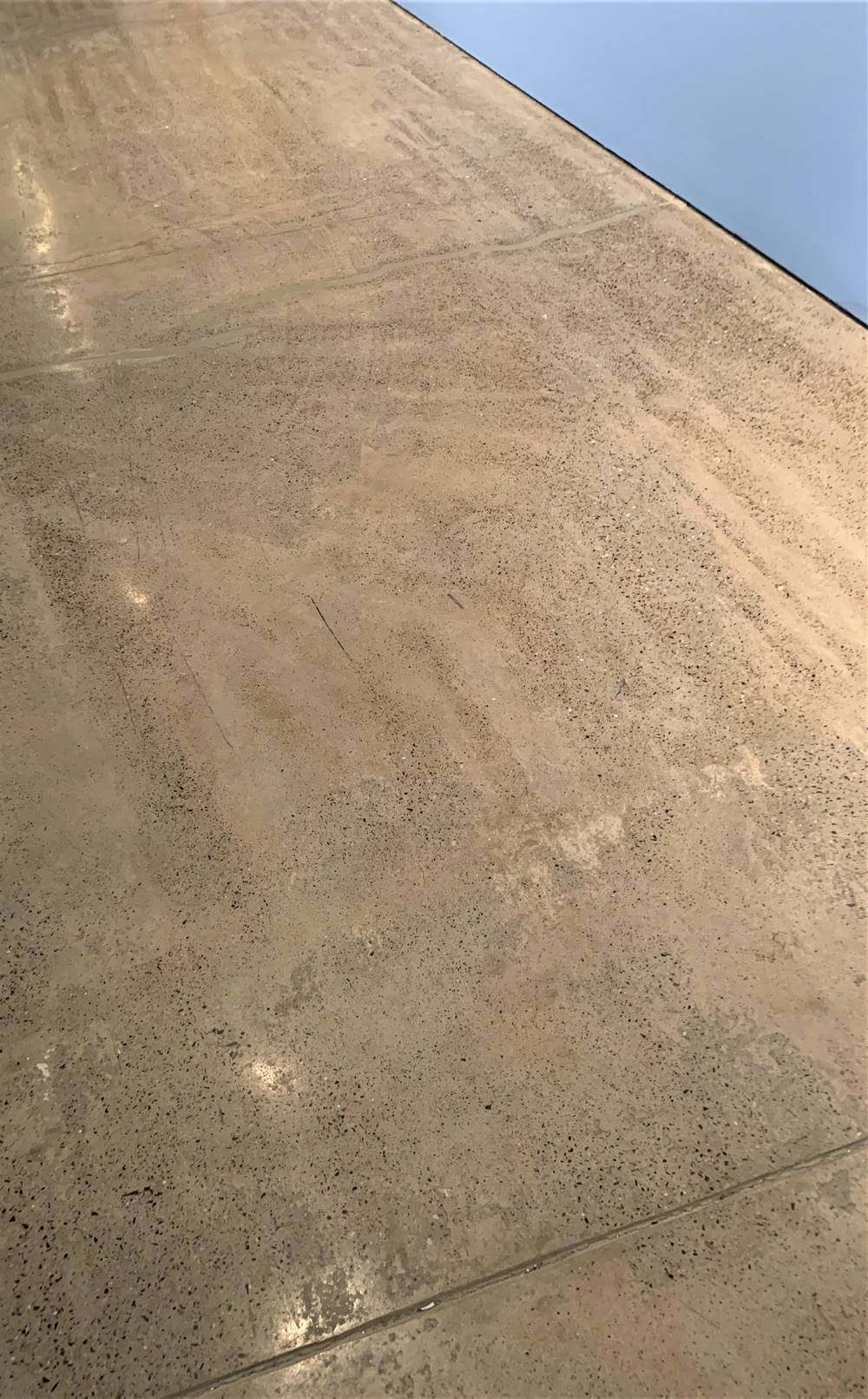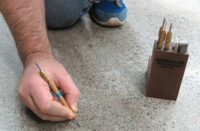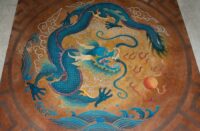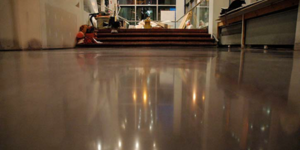
Let’s tackle understanding what happens when slabs curl and why concrete has light and dark areas that never change. (We call these differential curing marks). These are two more common types of damage that wouldn’t exist if you technically mixed, placed and cured concrete. Knowledge is power.
What is curling and why does it happen?
Curling is the distortion (rising up) of a slab’s joints, corners and edges due to differences in the percentage of moisture or temperature between a slab’s top and bottom. Any exposed surface will dry and cool sooner and shrink more than wetter or warmer concrete.
An example: When you cut a control/contraction joint into a slab or remove forms from a slab, and you applied the curing process too lightly or didn’t execute it on time, the most exposed area will curl. If a slab’s curled section gets loaded beyond the concrete’s flexural strength, cracks may also develop to relieve the stress.
Curling can be reduced by:
- Creating uniform moisture content with proper and timely curing methods.
- Using a low-shrinkage concrete mix.
- Using proper control-joint spacing.
- Anticipating environmental conditions and then controlling the temperature and airflow of the slab from top to bottom.
- Waiting the appropriate time. As the slab dries and cures, it will achieve a more uniform moisture content and temperature. Uniform moisture loss is one reason why 28 days help produce a more uniform aggregate reveal appearance. Until the slab gets climatized, 24/7 results are unpredictable.
- Grinding can restore serviceability. You also can inject portland cement grout into voids and restore the weight-bearing ability in a slab’s uplifted portions. NOTE: After the grout hardens, use a diamond grinder to grind down the surface to its original plane.
Differential curing marks
Curing marks develop as fresh concrete loses moisture at different rates. Marks from power trowels, tape, pallets, blankets and other things show up when the moisture evaporates at significantly different rates. Whatever contacts the slab limits the amount of evaporation.
For example, let’s say you left a power trowel on a freshly placed slab after you finished it. Whether on bare concrete or on top of a curing blanket, more mass now blocks evaporation where the blades come in contact with the blanket/floor than in the air gaps.
Since all curing methods decrease the rate of moisture loss — NOT stop it — they all breathe. When any object comes into contact with concrete, it affects the cure. When the curing blanket wrinkles or where a contractor didn’t apply enough chemical cure, moisture in the area not in contact with either the blanket or chemical will evaporate quicker. Where the blanket or chemical cure contacts the slab, it produces a darker color than the areas exposed to air.
Here’s the tip
Until the cap and construction debris get removed, you often can’t see curled joints or differential curing marks. Therefore, after the first grind, you must clean the slab with an auto-scrubber. Then, let it dry and inspect the surface for unusual marks or random coarse-aggregate reveal. After this, make labels on paper that state the job’s name and include that with each photograph of the slab. Take notes so you can remember the location of each issue.
These photos will serve as insurance in case these defects become a point of contention upon completion. Being able to prove that a mark or curl existed before your company entered the picture can settle many issues. It will show the owner that your company has an eye on the details and delivers as promised.















